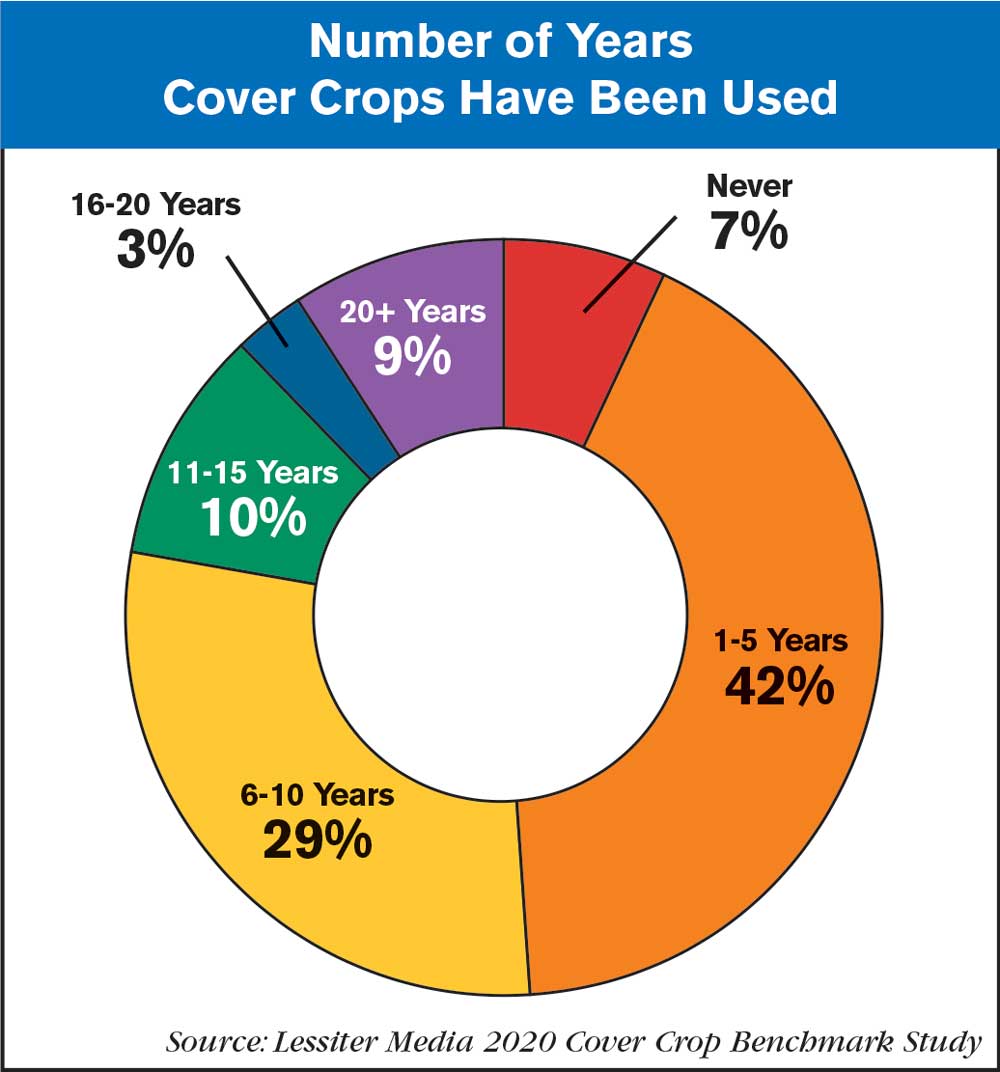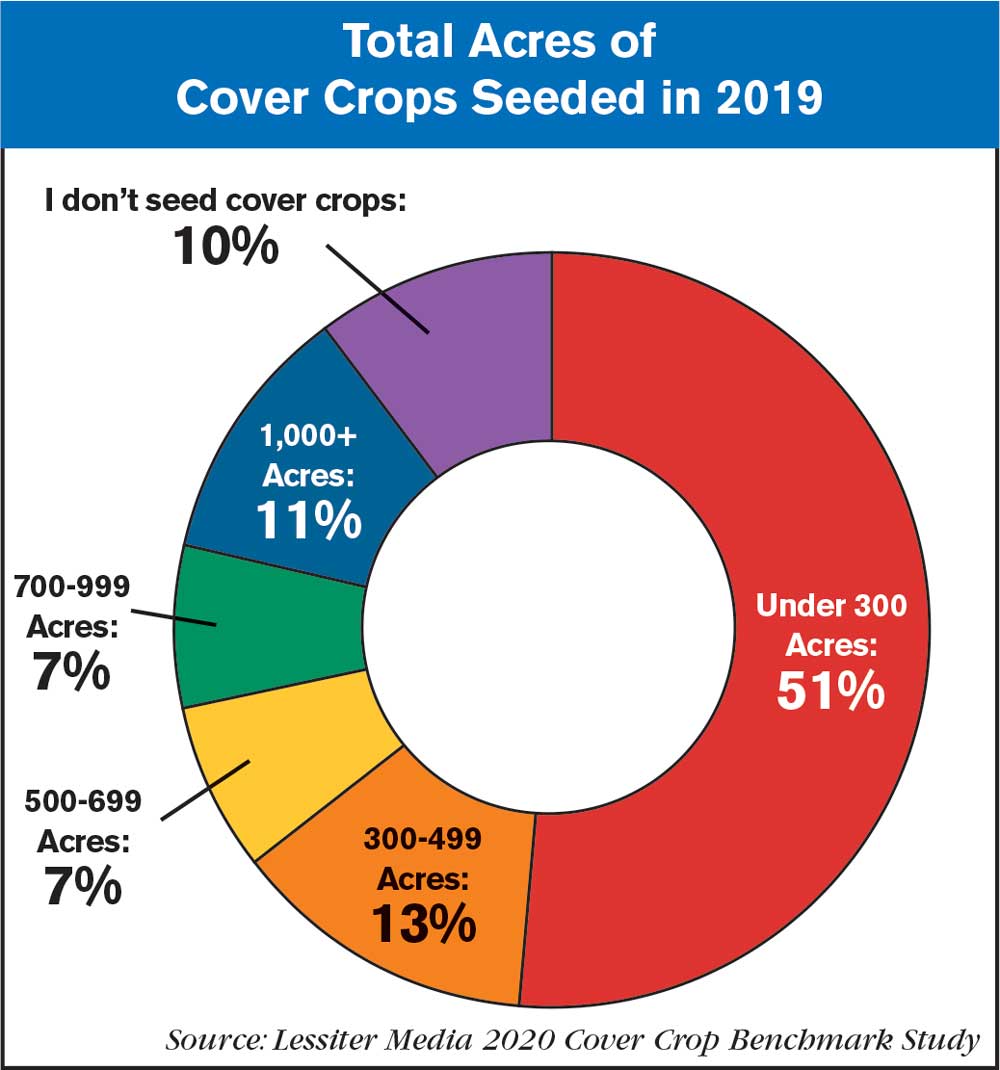Cover Crop Strategies is releasing the results of its first annual Cover Crop Benchmark Study, a special survey designed to allow farmers to compare the performance of their cover crop to industry standards and set goals for the future.
The information in this industry-exclusive survey will also serve as a valuable tool to both suppliers and educators as they seek to understand tends in cover crop use in farming. The survey garnered more than 1,400 participants, 90% of them farmers. The answers include 45 different states and 24 foreign countries.
Key categories in this survey, distributed in February, include demographic information, and sections on equipment use, interseeding, grazing covers and termination methods.
“This extensive survey took a great deal of preparation, as we sought opinions from responsive industry leaders and worked to be inclusive of various farming systems and end users who have an interest in utilizing covers,” says John Dobberstein, senior editor of Cover Crop Strategies. “In the coming years, through subsequent surveys, we’ll be able to compare key performance metrics, monitor adoption rates and identify which challenges are the biggest obstacles to adoption.”
Cover Crop Experience
Cover crop use is increasing amongst growers, and growers seem to be listening to expert advice to try cover crops on small parcels of land before working up to using them on more acres. The results of the first-annual Cover Crop Benchmark Study support these statements. This is the first article in a series that will discuss the findings of the study.
When asked how many years they’ve used cover crops, the majority of farmers (42%) said they’ve used them less than 5 years, and 30% indicated 6-10 years. Nearly 9% of respondents said they have used cover crops for more than 20 years.

As a silver lining, the disastrous weather year of 2019 may have also spurred some growers to utilize cover crops who may have been slower to give them a shot until circumstances backed them into a corner.
Just over half of respondents (51%) said they had less than 300 cover crop acres planted in 2019, while 13% seeded covers on 300-499 acres during last growing season. Just 11% of growers used covers on 1,000 or more acres.
 “We have to start small, or else we won’t be able to quantify it,” says Mitch Lazenby, a strip-tiller from Auburn, Ala., who also raises cover crops. “We have to quantify the value of cover crops. We need to maximize how much material we can get on the ground and manage.”
“We have to start small, or else we won’t be able to quantify it,” says Mitch Lazenby, a strip-tiller from Auburn, Ala., who also raises cover crops. “We have to quantify the value of cover crops. We need to maximize how much material we can get on the ground and manage.”
It may take a few years for growers to figure out which cover crop species work best, and to appropriately time cover crop seeding and termination. As with all things related to farming, growing cover crops is an evolving practice that will change over time, and to help your operation meet different objectives.
“You have to work on research and development continuously,” says Adam Dahmer, a veteran cover crop grower from Illinois. “Even after you find something that you like, you still want to see if you can improve it.”





Post a comment
Report Abusive Comment